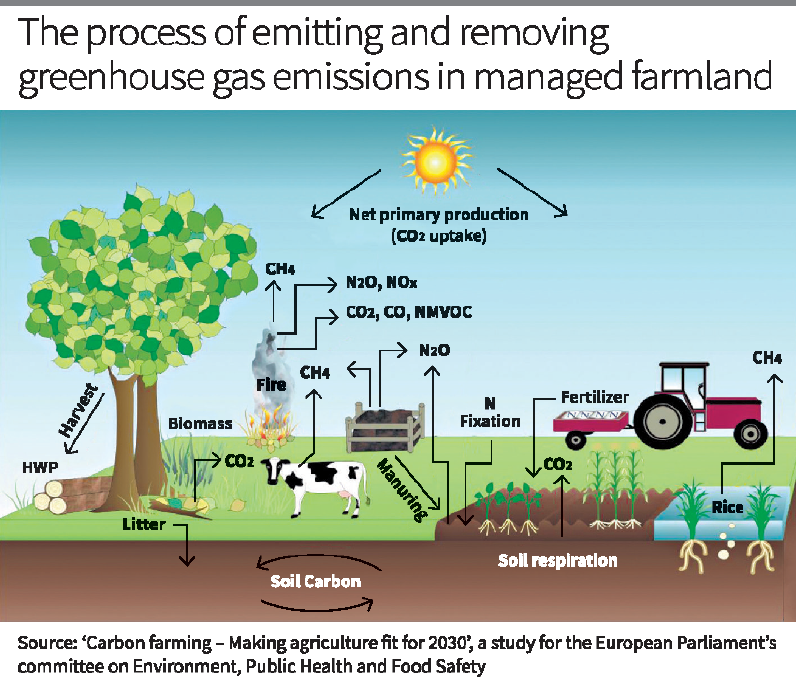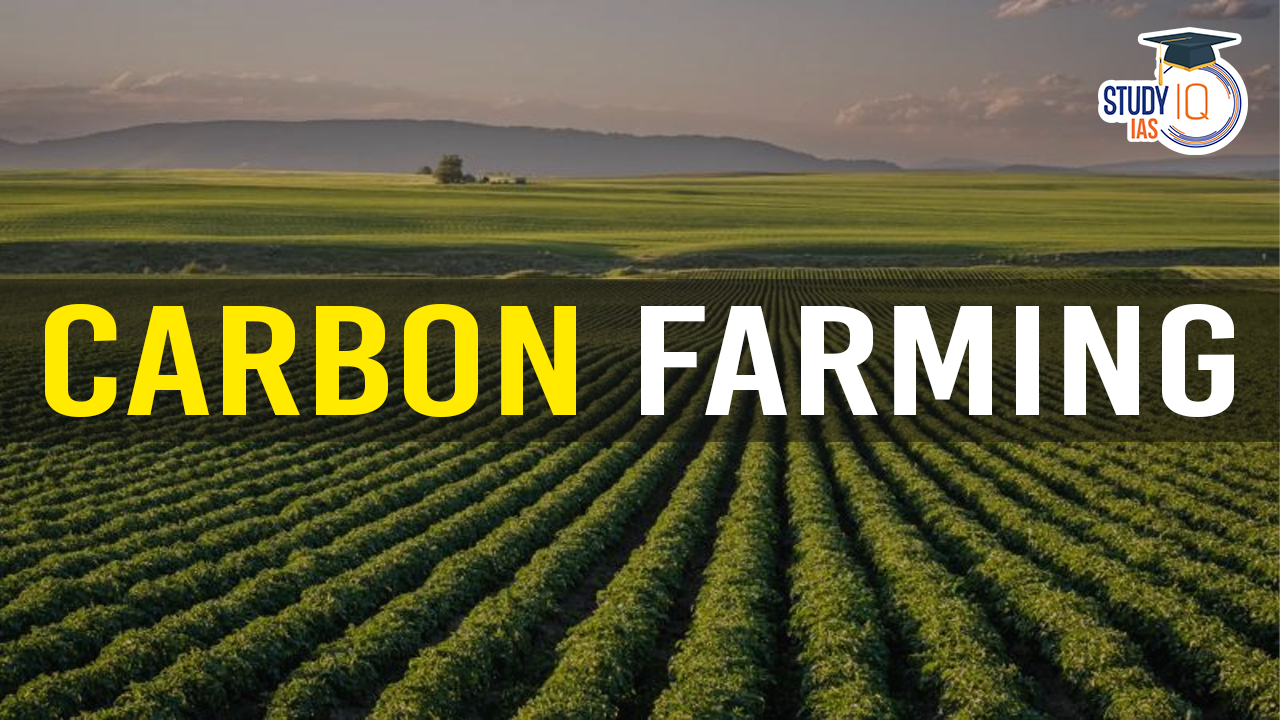Table of Contents
Context: Carbon farming offers climate solutions and economic benefits but faces challenges, especially in developing countries like India, where tailored strategies are needed for widespread adoption.
Carbon Farming
- Carbon farming involves regenerative agricultural practices that aim to improve ecosystem health, enhance agricultural productivity, and mitigate climate change by increasing carbon storage and reducing greenhouse gas emissions.

- Techniques include:
- Rotational grazing
- Agroforestry (e.g., silvopasture and alley cropping)
- Conservation agriculture (zero tillage, crop rotation, cover cropping, crop residue management)
- Integrated nutrient management (using organic fertilizers)
- Agro-ecological approaches (crop diversification and intercropping)
- Livestock management (optimising feed, managing waste to reduce methane emissions)
Challenges of Carbon Farming
- The effectiveness of carbon farming is influenced by various factors such as geographical location, soil type, crop selection, water availability, biodiversity, and farm scale.
- Water scarcity in arid regions hinders plant growth and sequestration.
- Financial burdens on farmers, especially in developing countries like India, where small-scale farmers may struggle with the initial costs of sustainable practices.
- Limited policy support and community engagement are crucial for widespread adoption.
Global Initiatives
Several international efforts highlight the growing importance of carbon farming:
- Voluntary carbon markets in countries like the U.S., Australia, New Zealand, and Canada.
- Chicago Climate Exchange and Carbon Farming Initiative in Australia promote carbon mitigation in agriculture.
- Kenya’s Agricultural Carbon Project is supported by the World Bank.
- ‘4 per 1000’ initiative was launched during the COP21 in Paris to enhance carbon sinks.
Opportunities in India
India presents a significant potential for carbon farming due to its large agricultural base and the need for climate-resilient practices.
- Economic potential: Agro-ecological practices could generate significant value, with an estimated potential of $63 billion from approximately 170 million hectares of arable land.
- Carbon credit systems: These can provide additional income to farmers through environmental services, with agricultural soils potentially absorbing 3-8 billion tonnes of CO2 equivalent annually over 20-30 years.
- Regional Suitability: The Indo-Gangetic plains and the Deccan Plateau are favourable for carbon farming, whereas the Himalayan region and coastal areas face specific challenges such as mountainous terrain and salinization, respectively.


 Monasteries in India: List of Major and ...
Monasteries in India: List of Major and ...
 National Doctor’s Day 2025: History, T...
National Doctor’s Day 2025: History, T...
 Bonalu Festival 2025: Date, History, Rit...
Bonalu Festival 2025: Date, History, Rit...





















